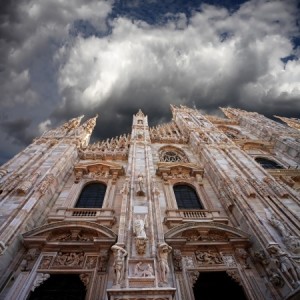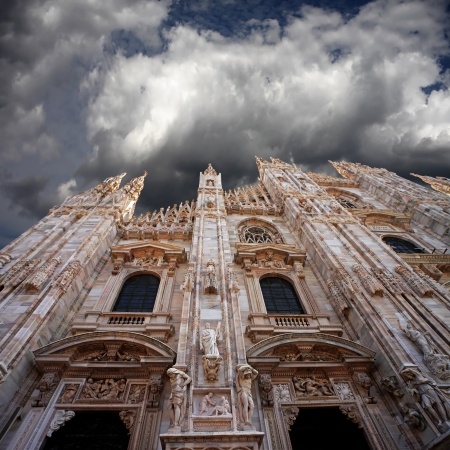
In 2003 a team of Israeli archaeologists doing a geophysical survey of the south-western part of Sea of Galilee discovered a huge cone-shaped structure underwater. It is 230 feet in diameter and about 39 feet high. The cairn is made of basalt boulders with no apparent construction pattern. The boulders have no signs of cutting or chiseling. There is no evidence of arrangement or walls within the structure.
The archeologists speculated that it could have been built on shore at a time when the water level of the Sea of Galilee was significantly lower than it is today. Or it could have been built to function as it does now as a habitat for fish; an ancient fish nursery. Its size suggests that a “complex, well-organized society, with planning skills and economic ability” built it more than 4,000 years ago. So far, no excavation of the site has been done. If you want, read the original journal article: “A Submerged Monumental Structure in the Sea of Galilee, Israel.”
We live in a time when the wonder of such an accomplishment is an everyday occurrence. Most medium sized cities around the world have structures that reach the mass of this 60,000-ton pile of rocks. We even have sea-going vessels that meet and surpass its tonnage. And yet it still bears the undeniable evidence thousands of years later that a group of humans came together and built it.
I think that one of the negative consequences of this capability in modern culture is that we miss the excitement and wonder intended when Scripture uses building or architectural metaphors to describe the work of building the kingdom of God. The gospel of Matthew (21:42) tells of Jesus quoting Psalm 118:22 as he gave a series of parables in response to the religious leaders questioning where he received the authority to do and say the things he did.
I imagine Jesus replied to them with some incredulity in his voice, haven’t you read in Scripture: “The stone that the builders rejected has become the cornerstone; this was the Lord’s doing and it is marvelous in our eyes?” He then told them that because of their rejection of him—the cornerstone provided by God, the kingdom they had been building would be taken from them and given to another people.
More than that, this stone (Jesus himself) was a stumbling stone. Since they rejected the cornerstone from God, their foundation was unstable. Instead of acting as a sure foundation upon which to build their spiritual existence, their building would fall. And when it fell, it would crush them (Matthew 21:44). There is an allusion by Jesus here to two verses in Isaiah, 8:14 and 28:16:
And he will become a sanctuary and a stone of offense and a rock of stumbling to both houses of Israel, a trap and a snare to the inhabitants of Jerusalem. (Isaiah 8:14)Behold, I am the one who has laid as a foundation in Zion, a stone, a tested stone, a precious cornerstone, of a sure foundation. (Isaiah 28:16)
Both Peter and Paul understood and used the metaphors of building and cornerstone in their teachings about Jesus and his kingdom.
Peter used the cornerstone and building imagery for his Pentecostal sermon in the book of Acts (4:11); and again in 1 Peter 2:4–8. There he referred to Christ as a living stone, the “chosen and precious cornerstone.” Believers are living stones as well, being built into a spiritual house. The chosen and precious cornerstone is of course referring to Isaiah 28:16. He stretched the inorganic imagery of the building metaphor by describing its individual components (Christ as the cornerstone and believers as the building stones) as living for a reason.
The inorganic sense of a building fails to grasp the fuller sense of union we have with Christ as a result of his death, resurrection, and the indwelling of the Holy Spirit. Not only do we come together with others to align with the teachings and standards of Christ as do building stones with a cornerstone, but our very lives exist within and through him, “In him we live and move and have our being” (Acts 17:28); “In his hand is the life of every creature and the breath of all mankind” (Job 12:10). Christ and his church are from the same family (Heb 2:11). Our union with Christ is more than the beauty of purpose and design seen in structures like Frank Lloyd Wright’s Falling Waters home. We are alive with Christ; the building is a living structure.
As Craig Keener pointed out in the IVP Background Commentary on the New Testament, the image of a living building of believers was not limited to just Christians. The Qumran community saw itself as a living temple. One text within the Dead Sea Scrolls even speaks of the temple’s individual elements (pillar, foundation, etc.) as living beings. They also applied Isaiah 28:16 to their own leadership.
Paul used the same imagery regularly. In Romans 15:2, he said that pleasing our neighbor for his good was “building him up. ” After we receive Christ (the cornerstone from God), we are to walk in him: “rooted and build up in him” (Colossians 2:6). In 1 Corinthians 3:10-11, he compared himself to a master builder who laid a foundation of faith in Corinth. Someone else was building on it, and Paul cautioned them to take care of how they build. “For no one can lay a foundation other than that which is laid, which is Jesus Christ.”
In Ephesians, Christ is the cornerstone and the apostles and prophets are the foundation of a holy temple. The Ephesians were being built together into a dwelling place for God (Ephesians 2:19-22). Again, the church members are part of God’s building. There is a clear sense of purpose, design and the need for careful alignment with the cornerstone and foundation—so that the dwelling of God is built according to the Designer’s specifications. And today, almost two thousand years after these original builders laid the foundation, that work continues. When we use Jesus Christ as the cornerstone of our lives and our work, we too are architektōns, master builders. And because we build upon a sure foundation, it will last until Christ comes again.





